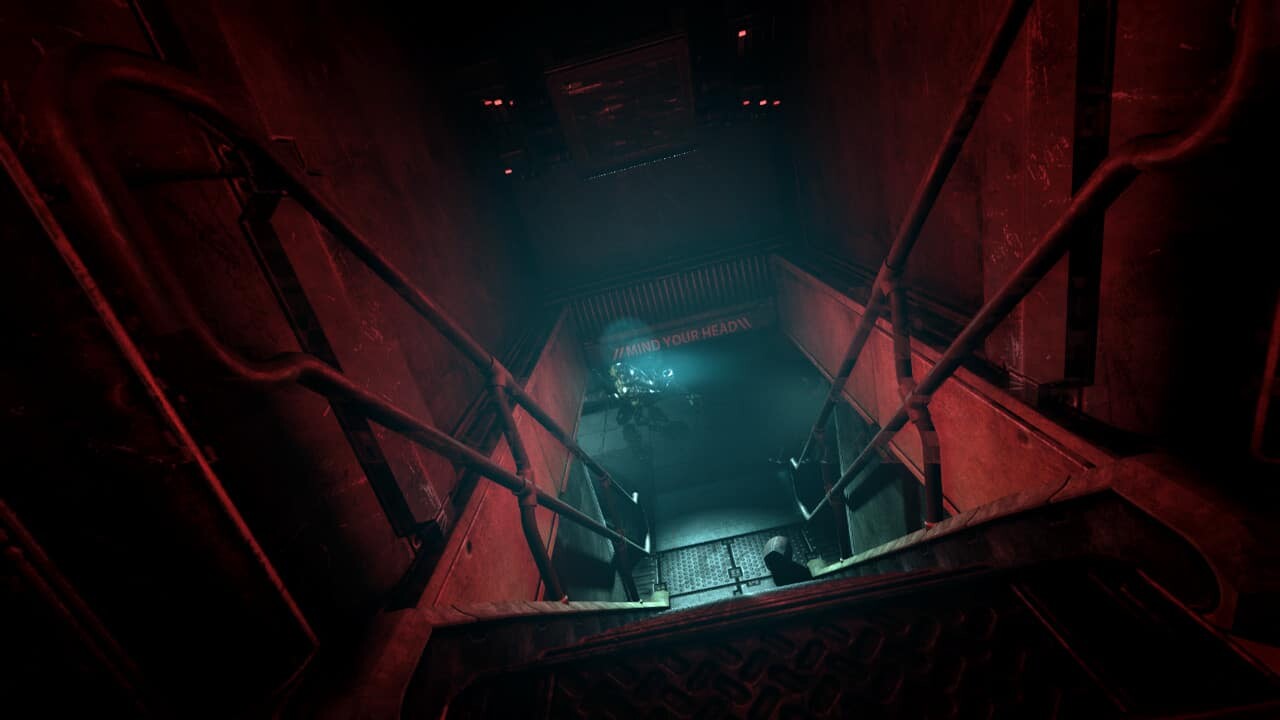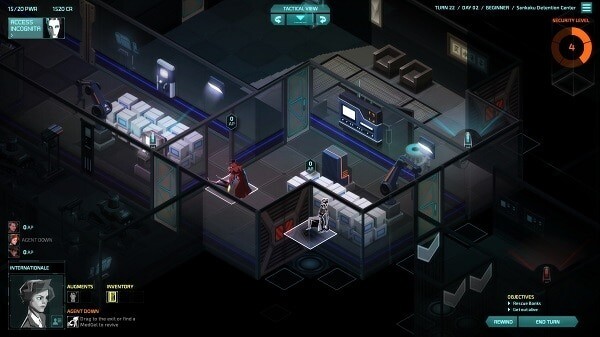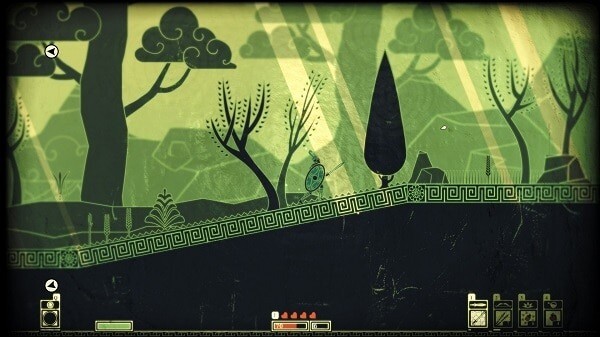 After much deliberation, literally tracking every game since January, more 4am discussions than we care to admit, and lots of tomfoolery in FaceRig, Tabletop Simulator and Hangouts, IGR has finally managed to polish off its more or less consensual Top 10 Indie Games of 2015.
After much deliberation, literally tracking every game since January, more 4am discussions than we care to admit, and lots of tomfoolery in FaceRig, Tabletop Simulator and Hangouts, IGR has finally managed to polish off its more or less consensual Top 10 Indie Games of 2015.
Well, well! what started as the year of Five Nights at Freddy’s sequels and PewDiePie ubiquity became the year of Undertale.
This title is deep and rich and confounding, mysterious, counter-intuitive and very controversial. Some of us at IGR think it is the second coming and others abhor it as a pretentious, tedious slog and a bore-fest. We would name names, but those opinions keep switching sides and flip-flopping.

That said, Undertale got so much praise and exposure this year that we are just going to make it our annual sacrificial lamb, and rather than include it in our top ten list, award it instead the honorary Most Disruptive Game of the Year.
We are also going to handle the ever-growing marketplace for unfortunately named “Walking Simulators” with a separate article as well as best mobile games, most anticipated for 2016, best soundtrack and our personal lists.
Please note that the following list represents titles that were expressly released commercially as final products in 2015. Without exception. Also, at the time of their release, they were made by relatively small indie developers. If they happened to then earn $50 million+ on their title after launch, that did not figure in our filter for independent development at the level at which we are focused.
We try to focus on games that deliver – in terms of a new mechanic, design, theme – and then bring those things together for legitimately engaging, playable, and maybe even fun experiences. All of those factors go into our final consideration. Intellectualisms and academia and sales reports aside, these are the top 10 games the 15+ independent, impartial writers at IGR polled as the best indie video games of 2015.
I am very grateful to and proud of our always growing stable of writers from around the world. They all review games based on a double blind – without knowing how and when it came, and our editors look at all games a second time to ensure that reviews are fair and balanced.
I am especially grateful to my assistant and news editors – InfinityWaltz and Adam Fimio for their tireless support of this project. And now, ladies and germs…Indie Game Reviewer presents the:
Top 10 Best Indie Games of 2015
10. Rocket League
by Psyonix
Its clean and bright visuals, fast pick-up-and-play controls, constantly busy matchmaking servers and pulsing dubstep-ridden soundtrack make this iteration of Psyonix’s dream to play soccer with automobiles a winner. IGR writers agreed across the board:
Adam: “While cars playing soccer sounded like a non-starter for me, the game quickly switches into high gear. Launching after an oversized ball in a massive arena is made accessible by the responsive controls and the constant scramble to get control of the ball. Oh, and any game that allows me to do a bicycle kick to score the winning goal WHILE IN A CAR is getting top marks in my book.”

Karl de Maré: “Well done, from controls to sound – easy and accessible but also very deep and hard to master. Takes the sports concept and makes something new that hits just right. Plus, I haven’t had this much fun in couch co-op in ages.”
Read our full review of Rocket League.
9. Downwell
by Moppin
Downwell seems like an odd game to unseat so many other contenders in an extremely prolific year for indie releases. Never mind the fact that it is developer Moppin’s (the pen name of Ojiro Fumoto) first major release (it got picked up by Devolver), that he is 23-years-old, or that it was originally intended for mobile devices. Never mind the fact that it has three colors total in its palette and looks more like a pocket Tamagotchi than Witcher 3.

Pay attention to the legitimate purity of the game here – that holy grail that we seek when approaching a fast-paced arcade action title. At first, you will suck at it. But there is just enough allure there to get you to try again. Then you discover you’re just a little better, you get a little further, and that the world is quite interesting.
Then you unlock an upgrade. Then another. Then you get a Gem High and discover the treasure rooms.
Then, as you fly at top speed down the well, using your expendable ammo gunboots to keep yourself alive and high on Gems, you realize that if you never actually hit any surfaces and just go from mob kill to mob kill, you start a chain that can lead to big Gem intake that leads to more power-ups, and now two hours have gone by and all you are doing is using a left and right arrow to control and a push button to shoot.

If this thing took quarters, I would have to just punch a hole in one and loop a string through it so I could play this from open ’til close, high on Mountain Dew, probably with a switchblade in my back pocket and a pink sweatband on to mop up the cold sweat of dying down the well after the ultimate rush.
Read our full review of Downwell.
8. Dropsy
by Tendershoot
It sounds like a bad joke: a hideous, terrifying clown – he even has the same lipstick design as serial killer John Wayne Gacy’s “Pogo the Clown” alter ego – that just wants to a hug everyone. The fact that the eponymous clown in Dropsy first showed up in the forums on Something Awful doesn’t help his case.

It’s all to developer Jay “Tendershoot” Tholen’s credit, then, that this “point and click hugventure” not only isn’t a cruel joke, it’s a heartwarming story with very real emotional impact. That’s not to say it doesn’t have its freaky moments – Dropsy’s nightmare sequences are psychedelic horror sure to shiver the spine of any coulrophobe – but in the end, Dropsy is a paean to kindness and positivity.
It’s also a very cleverly designed adventure game built around visual cues rather than textual ones (Dropsy himself is apparently nonverbal). Tholen does smart things with puzzle design, timing and even rudimentary party management in the form of Dropsy’s animal friends. And the graphics and soundtrack all work together to pay tribute to the best point-and-click adventures of the ’90s.
Read our full review of Dropsy.
7. BroForce
by Free Lives
Indie-Game-Freak: “So much madcap fun. Though it is a romping, stomping platformer side-scrolling shooter that feels like a modern update to Metal Slug X, Broforce adds a lot of variety, with a huge cast of familiar characters from your favorite action films, not limited to Boondock Saints, Aliens, Commando, Terminator, Indiana Jones, McGuyver and so many more.

Playing with friends is where this game really comes to life. Some levels require the power of BroForce, where your heroes raise their fists in unison and create an energy field that lets them perform extraordinary feats like jumping just a little further.
This is a game that teaches you that failure isn’t an end, it’s just a stage in the learning process. Doing that comfortably in the company of friends and laughing about it makes it even more valuable as a lesson and in its cathartic destructible-environment, gleeful pixel slaughterfest. We couldn’t ignore this one; it’s as much fun as co-op arcade action gets.”
6. SOMA
by Frictional Games
HappyWulf: “Frictional Games took their old Amnesia formula and perfected it. The monsters aren’t the scary part; the scenario is. It’s grounded in just enough reality that it could happen, so it’s unsettling. Everyone thought it was sci-fi, but in space…and it opens in a regular 2014 apartment in Canada. That cold open does a lot for it.”

Some might argue that SOMA – from the makers of Amnesia and Penumbra – is scarcely more than a glorified “walking simulator” because all you do is explore, get a deep story, and when you feel monsters approaching, find a place to hide. And occasionally solve puzzles.
Except that this is like the most heart-rate raising game of hide-and-seek you’ve ever played, and a company that has already invented new rules about what games can be – and set a high bar with their previous spook-fests (Amnesia was considered one of the most frightening games of all time) – is holding nothing back in this latest effort. That makes it a pretty fun game to us.
5. Prison Architect
by Introversion Software
InfinityWaltz: “As a base-building sim, Prison Architect is brilliant, perhaps the most detailed game of its kind since Dwarf Fortress (not to mention about a thousand times more accessible). Designing and building your prison is a delight, especially when you switch into “Utility Mode” to set up your electrical and water systems.
While the storylines of its extended tutorial could be clumsy and ham-fisted in their treatment of real injustices, that’s become less and less significant as Introversion Software continues to add new features, including cellmates, women’s prisons and even an escape mode where you take on the role of a prisoner yourself.”

HappyWulf: “In Prison Architect, rather than the monsters attacking your fortress, your monsters are on the inside, and you need to keep them under control: the prisoners. It’s like the best parts of Dwarf Fortress and The Sims. Keep your fortress secure, and keep your inmates happy so they won’t riot. Plus, the difficulty you choose is how dangerous your prisoners you intake, which also effects your daily grants and subsidies that you’ll have to budget.
Do you make a nice rehabilitation facility? Or do you run a for-profit, criminals as slave labor prison? Or do you run a horrible death row holding pen?
And like Dwarf Fortresses’s adventure mode, they just added “Escape Mode,” where you’re a prisoner trying to break out. And in the most recent update, they added female prisoners…who can become pregnant.”
Karl: “It’s the first game since Theme Hospital in that genre that had me losing track of time.”
Read our full review of Prison Architect.
4. Invisible, Inc.
by Klei Entertainment
InfinityWaltz: “Invisible, Inc. is pretty much the platonic ideal of turn-based stealth and hacking. More XCOM than Thief, its take on infiltration is all about tactics, party management and planning ahead. Infiltrate your corporate enemies, take over their security systems, steal their secret technology and rescue your compatriots.
As you manage your squad of two or three, teamwork is everything; as one team member breaks into safes, another might wait in the shadows next to the door, ready to knock out any inquisitive security guard who might happen across your illicit activities. And because the longer your crew stays in any building, the higher the likelihood of a bust, each break-in is a constant gamble; stick around a little longer for that big score, or make a break for it?

Invisible, Inc. strikes a perfect balance between thoughtful, small-scale strategy and nervous tension. Its cyberpunk noir graphics make it a beautiful thing to behold. Corporate espionage has never been so tempting.”
Read our full review of Invisible, Inc.
3. Keep Talking and Nobody Explodes
by Steel Crate Games

Indie-Game-Freak: “This is something that yokes excellent indie gameplay, with a means to expand the possibility through – and prove the viability of – VR gameplay while restoring person-to person interaction in a closeup and wetware-meaningful way. A great party game, a great VR game, a great collaboration and socializing experiment. And lots of fun.”
2. Tabletop Simulator
by Berserk Games
We tracked Tabletop Simulator when it was still in early beta and it seemed like an interesting idea, but perhaps one whose result would be too messy and hard to manage to ever be taken seriously. Besides, that year there seemed to be a million simulators released for anything under the sun.
Cut to 2015, where TTS goes as full release as a back alley massage parlor – alongside a massive collection of mods uploaded to the Steam workshop – and suddenly this become the solution to the global board gaming epidemic for those who can’t afford to travel to PAX, to their local gaming store or find a babysitter.
In its current state, Tabletop Simulator is intuitive, has all the right controls, and – while the going is good (depending on what side of the fence you are on) – a treasure trove for board games that may be hard to find, that you could never afford but always wanted to try, that are out of print and so on. Plus, it’s a terrific place to test and develop your own games and actually play them with friends.

Further, the ability to reverse and fast-forward time and events therein, easily keep track of chips, dice and cards – and all without any clean up – starts to make this incrementally an almost better solution for game night than actually being there.
Not only is this an amazing way to play games with others remotely, but the possibilities for VR are enormous. Moreover, this is a powerful way to prototype and test a game of your own, to share miniatures, to play fantasy and just imagine, play, explore, without any worry. Just an incredible tool that keeps getting better. Absolutely fundamental.
1. Kerbal Space Program
by Squad
Adam: “When Kerbal Space Program went into Early Access, the potential was immediately obvious, even if wasn’t clear just how far it would go. Four years later, KSP is light years further ahead. Escaping Kerbin’s gravity is just the beginning: an entire solar system of planets is reachable, provided you can construct the right equipment. Each new challenge opens up a host of new challenges, and trial and error are your two greatest tactics.

You’re going to take some lumps along the way, and a lot of Kerbals are going to die in fiery explosions. In the campaign mode, you’ll grapple with your public image if you can’t temper your many failures with the odd massive success. You’ll never reach the stars if you can’t control the fires on the ground.
Just wow. The ability to mix comedy with the headiness of space flight comes together beautifully in this deep package that bridges simulator arcade fun with some real rocket science. The potential for failure is ever present, but the universe is vast. Go explore it.”
InfinityWaltz: “What really grabbed me about this one is how gloriously joyful failure can be. It’s been a long time since I laughed this hard in a video game, but seeing my carefully built rocket burst into flames, fall on its side and then roll gently off the launch pad without ever actually leaving the ground was a burst of unmitigated hilarity.
Of course, actually succeeding in Kerbal Space Program provides a rush of accomplishment, as well. And playing 10 minutes of just the demo – not even the full game! – will teach you more about real world astrophysics than all of this year’s other games combined.”
Read our full review of Kerbal Space Program.
Best Indie Games of 2015 – Honorable Mentions:
The Magic Circle

A postmodern video game where you deal with half-implemented code from the inside, reprogramming bits of the game itself as you go along. Come for the clever puzzle design, stay for the inside jokes and game industry references. Game designers wish that being stuck in “Development Hell” was this entertaining.
Read our full review of The Magic Circle.
Viscera Cleanup Detail

A perhaps content-starved idea gone right or a gag that went too far. Viscera Cleanup Detail‘s amazing premise – who does the tidying up after the FPS carnage goes home for the night? – is an amazing fishbowl to tap for those who derive pleasure from reversing the effects of entropy and causality. A fun thing to do while binge-watching your favorite TV series.
Seven Day Band
by Zincland

A free-to-download ASCII-based Roguelike that requires that you input the variables for each thing you encounter, thus instantly customizing the adventure that you increasingly modulate to suit your personality as you hack your way through the AI.
Westerado: Double Barreled
by Ostrich Banditos

Solve a wild west murder mystery with randomly generated clues in a startlingly large sandbox. Enjoy surprisingly satisfying 8-bit revolver action – push button to fire, push again to load the next bullet in the chamber. Groove to a chiptune tribute to Ennio Morricone.
Read our full review of Westerado: Double Barreled.
Chaos Reborn
by Snapshot Games, Inc.
This just barely missed our top 10 and only because of the RNG intrinsic to the game that made many feel like no amount of learning or skill could outpace a random roll of the bones.

With the December 23rd update sliding in just before the end of the year, however, Chaos Reborn expanded into a sizeable solo campaign mode, text-heavy but full of new maps and scenarios. The visual design is jaw-dropping and the soundtrack made it to the top of our best of the year. Pick it up if you can handle the risks of die rolls but love a good hex-based battle.
Technobabylon
by Technocrat Games

This cyberpunk point-and-click adventure is one of the best written games of the year. While Technobabylon doesn’t break new ground, it makes up for it with memorable characters, believable dialogue and puzzles that all make sense within the context of the story.
Read our full review of Technobabylon.
Apotheon
by Alientrap

The controls in this side-scrolling action RPG might have been intentionally a bit clumsy – combat in real life ancient Greece was tougher than “click to throw javelin,” after all – but the art! Based on ancient pottery, the graphics in this game are poetry in motion (Keats’ “Ode to a Grecian Urn,” to be specific). Regardless of whether you actually enjoy the occasionally awkward combat, the world of Apotheon is a beauty to behold and explore.
Read our full review of Apotheon.
Infinifactory
by Zachtronics
If being abducted by aliens isn’t bad enough, you’re forced into a life of manual labor. Armed with a jetpack and an infinite supply of parts, you have to create vast, complex factories to perform wickedly specific tasks.
Slick visuals (that feel like something from Valve) and Zachtronics traditionally complex puzzlery make for a pro-grade package.

Infinifactory doesn’t use any of its complex machinations to re-invent the wheel. However, it does make for a charming and daunting puzzle game where there is never only one solution. Touring about your completed projects just to watch them in motion is thrilling all on its own.
Read our full review of Infinifactory.
Fran Bow
by Killmonday Games
A 10-year-old girl struggles with her demons after having discovered the dismembered remains of her parents. She is locked up in an institution where doctors try to normalize her using therapy and medication. After a failed experiment with an anti-psychotic drug, Fran discovers that taking the pill gives her glimpses into a bizarre and gory parallel otherworld that contains information she can’t see while lucid. Only through exploring both realms will Fran find an escape from her imprisonment and her pain.

InfinityWaltz: “With its mixture of scary yet childlike themes of mental illness and its “cutesy goth” approach to graphics, Fran Bow is like the adventure game equivalent of Tim Burton’s movies and Emilie Autumn’s music. Throw in the fact that the “bottle of pills” mechanic makes for some cleverly designed puzzles that make perfect sense within the context of the story, and you’ve got maybe the best perky/scary classic point-and-clicker since Grim Fandango.”
Volume
by Bithell Games

InfinityWaltz: “An altogether different sort of futuristic stealth game from Invisible, Inc. – though one with similar themes – Volume is reminiscent of the stealth elements from the Metal Gear series, evoking immediate panic rather than slowly ratcheting tension. Voice acting from the likes of Andy Serkis, among others, helps to sell the game’s story of a VR Robin Hood leading a real-world revolution. Add a level editor and online leaderboards, and you’ve got tons of replay value, making this a more than worthy follow-up to developer Mike Bithell‘s previous game, the critically acclaimed Thomas Was Alone.”
Read our full review of Volume.
Check out IGR’s Best Indie Game Lists from Previous Years
What games were in your top ten in 2015? Please let us know in the comments!



